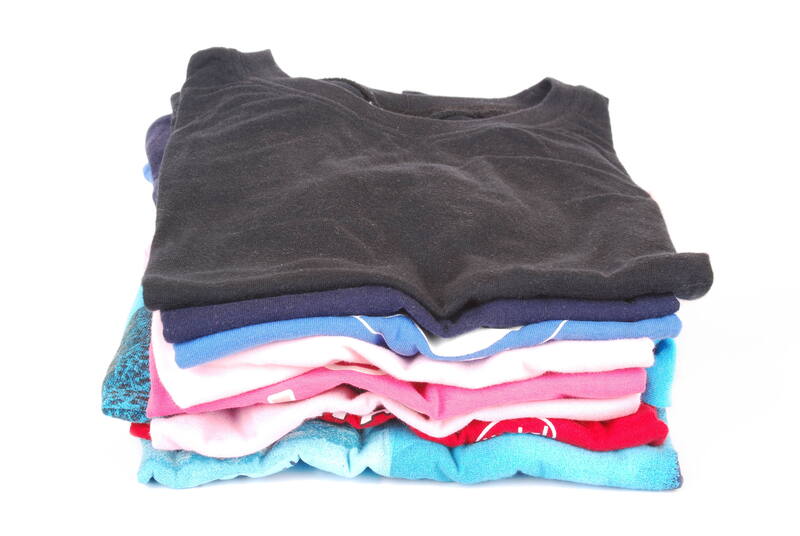Quick and Easy PPE Waste Disposal Tips
The surge in the use of Personal Protective Equipment (PPE) has played a pivotal role in enhancing safety and minimizing the spread of infectious diseases across the globe. However, the increased use of masks, gloves, face shields, and gowns has also raised significant concerns regarding PPE waste management. If handled improperly, PPE waste can pose dangers to both the environment and human health. In this comprehensive guide, we will share practical, quick, and easy PPE waste disposal tips to ensure your safety and support environmental sustainability.

Understanding PPE Waste: Types and Risks
Before diving into the best PPE waste disposal practices, it's essential to understand what constitutes PPE waste and the risks it carries. PPE waste includes all used or discarded items designed for personal safety, such as:
- Masks (disposable and reusable)
- Gloves (latex, nitrile, vinyl, etc.)
- Face shields and goggles
- Protective gowns and aprons
- Shoe covers and hairnets
- Sanitizing wipes and tissues used on PPE
Improper disposal of these items can lead to:
- Environmental pollution--plastics and microplastics from PPE items can harm wildlife and contaminate water sources.
- Health hazards--infectious agents can linger on the surfaces of used PPE, posing risks to waste collectors and the public.
- Clogged drainage systems--discarded PPE can block sewers and drains, causing flooding and sanitary issues.
Quick and Easy PPE Waste Disposal Tips for Homes
Managing PPE waste at home is straightforward with a few sensible practices. These simple PPE waste disposal tips will help you stay organized and environmentally responsible:
1. Set Up a Dedicated PPE Waste Bin
Allocate a lined, clearly labeled bin exclusively for PPE waste such as masks and gloves. This prevents mixing with regular trash and reduces risk of contamination.
2. Double-Bag Hazardous PPE Waste
For items that may be contaminated (e.g., used when caring for a sick person), place them in one bag, seal it tightly, then place it in a second bag before disposal. This extra step adds a crucial layer of protection.
3. Never Flush PPE Items Down the Toilet
Flushing masks, gloves, or wipes can block your home's plumbing and contribute to public sewage problems. All PPE waste should go in the trash, never in the toilet!
4. Clean Your Hands Thoroughly
After handling used PPE, always wash your hands with soap and water for at least 20 seconds, or use an alcohol-based hand sanitizer.
5. Follow Local Waste Disposal Guidelines
Check with your city or municipality for any special instructions on PPE waste collection. Some regions have designated collection days or drop-off points to handle hazardous materials effectively.
Office and Workplace PPE Waste Disposal Solutions
Organizations play a vital role in ensuring PPE is disposed of properly. Here are some quick and easy PPE waste management solutions for the workplace:
- Install Specialized PPE Waste Bins: Place bins with lids and clear signs in key locations--entrances, break rooms, restrooms, and common areas.
- Appoint PPE Waste Monitors: Assign staff members to oversee and remind their peers about the importance of correct disposal procedures.
- Educate Employees: Regularly provide training and display infographics on how to dispose of masks, gloves, and related waste safely.
- Arrange for Regular Waste Collection: Coordinate with professional waste management services to ensure timely collection, especially if biohazardous waste is generated.
- Maintain a Clean Disposal Area: Ensure bins do not overflow and sanitizers are accessible for staff to clean their hands after disposing items.
PPE Waste Segregation: Why It's Important
PPE waste should be separated from regular recyclables and compostables. Mixing PPE with general waste not only increases the risk of contamination but also complicates recycling and waste processing.
- Use Color-Coded Bags: Many municipalities recommend using red or yellow bags for medical and hazardous PPE waste. Always follow your local authority's guidance.
- Label All PPE Bags: Mark bags as "PPE Waste" or "Hazardous" to alert waste collectors of potential risks.
PPE Recycling: Is It Possible?
While most PPE (especially single-use masks and gloves) must be disposed of as waste, some innovative recycling programs are emerging:
- Check for Local PPE Recycling Initiatives: Some companies and organizations have started accepting used masks and gloves for specialized recycling. TerraCycle is a notable example offering zero-waste boxes for PPE collection.
- Reusable PPE: Whenever possible, opt for washable masks and gowns that can be sanitized and reused, reducing overall waste volume.
Environmental Impact of Improper PPE Disposal
The environmental consequences of neglected PPE waste are far-reaching:
- Marine Pollution: Masks and gloves find their way into waterways, killing marine animals who swallow or become entangled in them.
- Microplastics: Non-biodegradable PPE breaks down into microplastics, contaminating soil and water supplies.
- Wildlife Threats: Terrestrial animals may mistake PPE for food, causing harm or death.
Proper PPE waste disposal methods are critical for safeguarding the planet!
PPE Waste Disposal Tips for Healthcare Settings
Healthcare facilities generate substantial amounts of PPE waste and must adhere to strict protocols to prevent infections and ensure compliance:
- Segregate Infectious Waste: All PPE used in treatment areas should be placed in specifically marked biohazard containers.
- Minimize Handling: Seal bags when three-quarters full and avoid opening them again.
- Use Automatic Hand Hygiene Stations: Staff should sanitize hands both before and after removing PPE.
- Regular Staff Training: Review updated guidelines for safe disposal and handling of infectious waste.
- Partner with Accredited Waste Disposers: Work only with certified waste disposal companies that specialize in medical and hazardous waste.
Travelling with PPE? Here's How to Dispose of It
Whether you're commuting, running errands, or vacationing, keeping these portable PPE disposal tips in mind will help you travel safely and responsibly:
- Carry Sealable Plastic Bags: Use Ziploc or resealable bags to store used masks and gloves until you can access a trash bin.
- Never Litter: Never drop used PPE on the ground or public spaces. It's hazardous and illegal in many places.
- Dispose at Designated Points: Airports, stations, and malls often provide labeled bins for PPE waste--use them.
- Hand Hygiene On-the-Go: Keep a travel-sized hand sanitizer for immediate cleaning after handling used PPE.
Reducing Your PPE Waste: Pro Tips
Prevention is the best strategy to address the mounting challenge of PPE waste. Here's how you can reduce your PPE waste footprint:
- Switch to Reusable PPE: Choose cloth masks and washable gowns where appropriate, and wash them regularly.
- Buy Responsibly: Purchase PPE items that are eco-friendly, biodegradable, or recyclable when possible.
- Educate Others: Spread awareness among family, friends, and coworkers about responsible PPE use and disposal.
- Opt for Bulk Disposal: Instead of disposing of one item at a time, collect multiple items and dispose of them together to minimize bag usage.
Key Takeaways: Simple Steps for Safe PPE Waste Disposal
- Separate PPE waste from regular trash and recyclables.
- Never flush PPE down toilets or throw into open environment.
- Use two bags (double-bagging) for suspected contaminated PPE.
- Always clean hands after handling used PPE items.
- Follow local regulations and look out for recycling opportunities.
- Encourage reusables and eco-friendly PPE alternatives.

Frequently Asked Questions About PPE Waste Disposal
Can I recycle disposable masks and gloves?
Most regular recycling programs do not accept disposable masks and gloves due to contamination risks. Some specialized services, like TerraCycle, offer paid programs for recycling PPE, but generally, these items should go to landfill waste.
What should I do if I see PPE litter in public?
If you are equipped with gloves and a plastic bag, you can carefully pick up the item, seal it in a bag, and dispose of it in a proper waste bin. Always sanitize your hands afterward.
Are biodegradable PPEs available?
Yes, there are eco-friendly PPE alternatives such as biodegradable masks and gloves made from plant-based materials. They offer similar protection but break down much faster in the environment.
How long does it take for a disposable mask to degrade?
A disposable mask can take up to 450 years to decompose in a landfill. This is why proper disposal and reduction in use are so important.
Conclusion: Make PPE Waste Disposal Your Responsibility
In the ongoing effort to protect ourselves and our communities, PPE use has become the new normal. As responsible individuals and organizations, it's our duty to ensure that the disposal of PPE waste is safe, quick, and environmentally conscious. By following these simple PPE waste disposal tips and promoting awareness, everyone can do their part to keep homes, workplaces, and public spaces safe and clean.
By integrating these strategies into your daily routine, you not only enhance health and hygiene but also make a positive impact on the planet for future generations.
Remember: Proper PPE waste management is a shared responsibility--let's do our part today!
For more advice on safe and effective waste disposal, keep visiting our site and update your knowledge on the latest ppe waste disposal techniques and environmental tips!
```